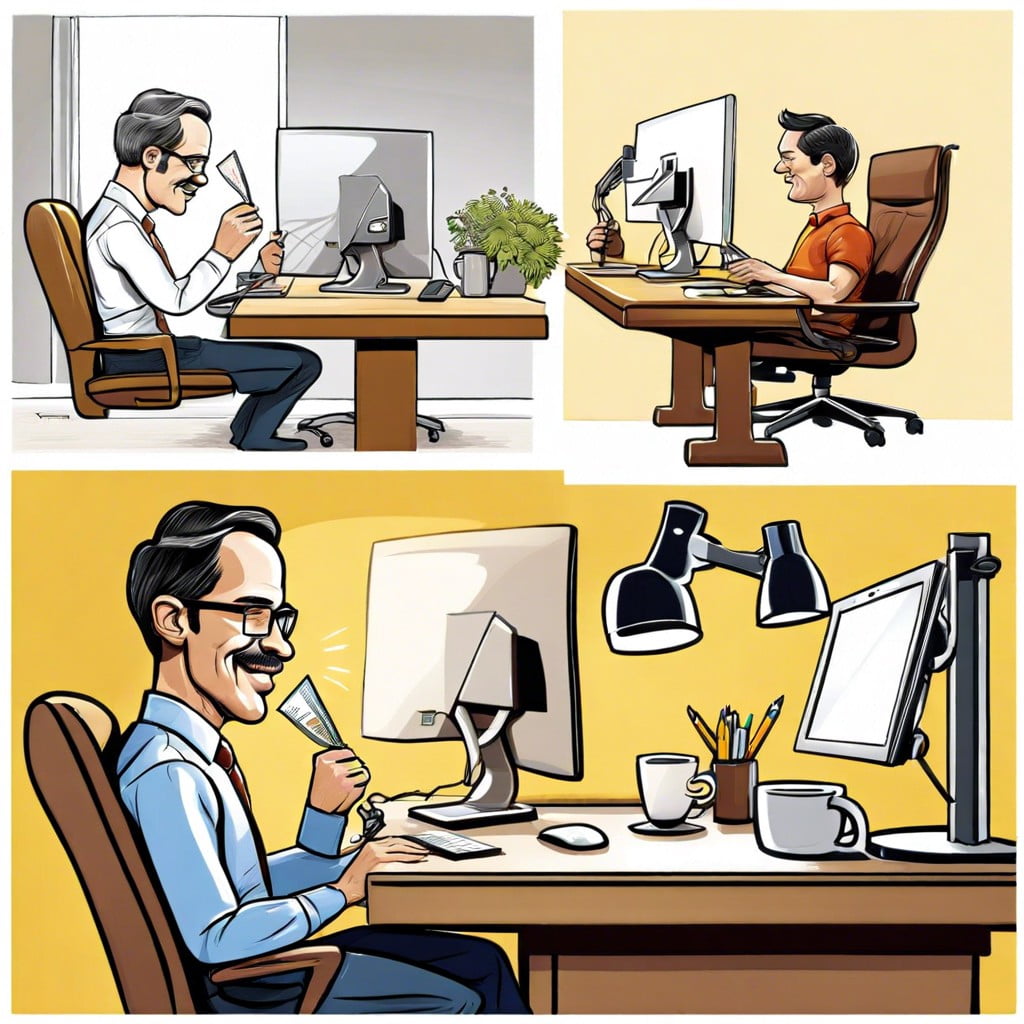Discover the key reasons why you might be productive at work but struggle to get anything done at home.
Ever wondered why you’re a task-master at work but a couch potato at home? It boils down to the structured environment, clear goals, and a sprinkle of accountability magic you get at the office. At home, distractions and the absence of a solid routine can turn productivity into a mirage. But fear not, dear reader! This article unravels the mystery and offers you all the juicy details you need to transform your home into a productivity powerhouse. آماده؟
Key takeaways:
- Structured environment at work promotes focus.
- Clear work goals drive productivity with urgency.
- External accountability boosts motivation and progress.
- Distractions at home hinder productivity significantly.
- Work-focused mindset and routine enhance productivity.
Structured Environment Vs. Flexible Environment

Workplaces are designed with productivity in mind. Think ergonomic chairs, designated desks, and strategically placed water coolers for those much-needed breaks. It’s like one big productivity theme park.
At home, the couch, the fridge, and Netflix act as undercover agents working to distract you. The flexible environment, while comfortable, doesn’t automatically encourage focus or efficiency.
In the office, the structure is often baked in. There’s a start time, end time, and everything in between is usually mapped out. Compare that to home where even deciding where to work can take up half your morning.
Rules are clearer in a structured environment. No one’s debating with you about leaving dirty dishes around the break room. But at home? Suddenly, doing the laundry seems like an urgent task when you need to work.
Essentially, the physical layout and routine of a structured environment create an automatic focus zone, while the freedom of a flexible one can sometimes feel like a productivity Bermuda Triangle.
Presence of Clear Goals and Deadlines
At work, goals and deadlines are often crystal clear. You’ve got projects to finish, meetings to attend, and targets to hit. This clarity creates a roadmap, guiding your every step. At home, things tend to be a bit more… fuzzy. Sure, you want to clean the garage someday, maybe start that hobby, but “someday” lacks the urgency of a work deadline.
Deadlines at work also come with a side of necessity. Miss them, and you might face consequences, which acts as a powerful motivator. At home, the flexibility can lead you to think, “What’s one more episode of my favorite series?” Spoiler alert: it’s rarely just one more episode.
Work goals are often created for you, providing a structure that keeps you on track. At home, you set your own goals, which can be as loosey-goosey as you allow. And let’s face it, sometimes loose and goosey are the best pals of procrastination.
External Accountability and Supervision
Supervisors and colleagues can be fantastic motivators. At work, you’ve got someone keeping an eye on your progress and maybe the occasional friendly nudge. Plus, there’s a sense of camaraderie and shared purpose, which can be surprisingly motivating. Deadlines set by others often feel more pressing than personal ones; it’s much harder to bamboozle Brenda in HR than to justify why “Netflix and chilling” needed an extra hour.
At home, however, the only supervisor might be your cat, and let’s be honest, Mr. Whiskers isn’t great at enforcing deadlines. There’s no team relying on you, and no boss expecting a report on progress. The result? Tasks slip down the priority list as you negotiate with yourself over what’s urgent. Spoiler: pizza and a movie sound very convincing.
Distractions and Boundaries
Distractions are the sneaky enemies of productivity. At home, they multiply like rabbits. Whether it’s the siren call of the fridge, the allure of Netflix, or that crafty cat insisting on sitting on your keyboard, distractions abound.
Boundaries blur at home. One minute you’re working, the next you’re folding laundry or scrolling through social media. In the office, workspaces are dedicated to getting stuff done.
Creating boundaries can help. Visualize an invisible office door at home. Set clear work hours. Tell your friends, family, and pets: “No interruptions, please!” Well, maybe not the pets. They never listen anyway.
Work-Focused Mindset and Routine
At work, our minds transition into a focused gear. Think of it as flipping a productivity switch when you walk through the office door—or log in from your home office. This mental shift is bolstered by several factors:
Routine Habits – Your commute, morning coffee, and even that 9 a.m. email check are triggers that tell your brain it’s go-time. Like Pavlov’s dogs, but with fewer drool incidents.
Structured Schedule – Meetings, deadlines, and lunch breaks create a predictable flow. This predictability helps you stay on task and manage time better.
Work Environment – The mere presence of coworkers and supervisors can provide a mental nudge. You’re less likely to scroll social media when your boss can pop by any moment.
Designated Workspace – A physical desk (or corner table) cues your brain that it’s time to buckle down. Unlike a couch, which whisper-yells “Netflix?”
By creating and reinforcing these habits and cues, we unwittingly train our brains to be most effective in a work setting. Adapt some of these strategies at home, and see if productivity decides to visit.